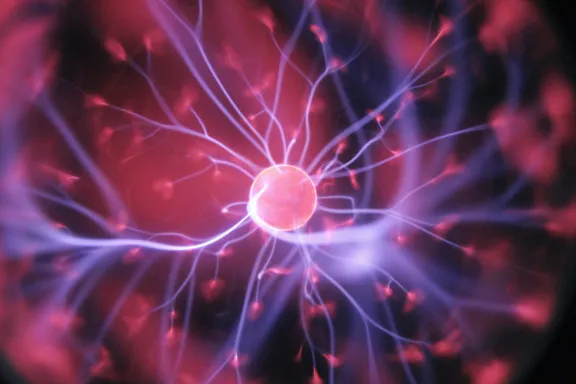
Photo by Hal Gatewood on Unsplash
Stranger in a Strange Mind
“What would it feel like if someone else were to come into your head?” An epilepsy patient posed this question when asked to describe their mental state before a seizure during a recent study on dissociative states. “What I considered ‘me’ shrank to this other part of me… the other parts of me were talking,” the patient said.
Last month, researchers at Stanford University published evidence that these identity-bending dissociative states are represented by a particular brain rhythm in a region of the brain called the retrosplenial cortex. This discovery points to how our self-awareness and consciousness might be tied to a particular brain activity, and it has implications for people with dissociative disorders.
Dissociation is an umbrella term that includes a perception of other people or of one’s surroundings as being unreal, a blurring of one’s self-identity, and a sense of being detached from one’s feelings or body. Dissociation is more commonly known by its Hollywood incarnation, the out-of-body experience. While pop culture links dissociation to certain drugs and responses to traumatic events, it is estimated that dissociation is quite common: one quarter to three quarters of the population report having had at least one episode of dissociation, depending on the criteria used. In the case of dissociation caused by extreme stress, it is not known whether the dissociation is a breakdown of everyday consciousness or a protective distancing from the stressful event.
However, not all dissociation is a one off. The chronic recurrence of dissociation can interfere heavily with quality of life in the form of dissociative disorders. In these disorders, people often live with a deep feeling of disconnection from the world around them, sometimes believing that they or their surroundings are not real. Therefore, it is important to research not only how our brain circuits coordinate to form a coherent sense of reality and self, but also to understand how these circuits malfunction in cases of psychiatric disorders.
While you might think that studying something as complex as dissociation in a 25 gram rodent might prove difficult, the researchers of this study overcame this challenge by taking advantage of our knowledge that certain compounds induce dissociation. In their first experiment, mice received ketamine, a well known dissociative drug. Ketamine can also be anesthetic at higher doses, so researchers selected a dose which was lower than that which causes anesthetic effects. Remarkably, when the researchers recorded across the entire outer cortex of the brain, just one small region called the retrosplenial cortex showed an unusual rhythmic activity each time they gave ketamine. In fact, the researchers later found that of the several layers of the cortex in this area, this rhythm was specific to a single layer of cells. Given the powerful subjective experience of dissociative states, we might have easily expected large brainwide changes in activity as a result of ketamine.
To ensure this rhythmic activity was specific to the dissociative effects of ketamine, and not its other effects, mice next received another dissociative drug, either PCP or MK-801, or the non-dissociative hallucinogen LSD. The dissociative drugs caused the same localized rhythm, while LSD did not. Along the same lines, a sedative and an opioid painkiller did not cause the rhythm, and two non-dissociative anesthetics created rhythms which were not limited to this region alone but across the entire cortex.
Typical studies of the brain focus on one or a few regions at a time, so this research was already pushing the limits by recording across the entire cortex of mice brains. However, the scientists were also able to establish that, at least in one volunteer patient, the dissociative aura before an epileptic seizure created the same rhythm in the human retrosplenial cortex. Though an aura was not the same dissociative experience of the mice administered ketamine, and one human subject is not enough to prove a phenomenon, it suggested that not just dissociative drugs but naturally occurring dissociation is caused by the same patterns of activity in the brain.
Finally, the researchers causally linked the retrosplenial rhythm to the phenomenon of dissociation by creating the same rhythm in the brains of mice and their brave human volunteer. Using light-activated ion channels to control activity of neurons in mouse retrosplenial cortex, the researchers were able to artificially creating a 4 Hz fluctuation of activity. Though it is hard to get philosophical statements from mice about their state of mind, the mice’s behavior looked similar to that of mice on ketamine, where the mouse’s reflexes in response to a hot temperature were intact but the mouse did not lick its paws after touching a hot surface.
In their human volunteer, the researchers were able to stimulate different parts of the cortex during the course of diagnostic testing. While the implanted electrodes are sometimes used to find the starting point of a seizure, in this case the electrodes were also useful in determining that stimulation near the retrosplenial cortex gave this patient the pre-seizure feelings of dissociation. Each time the patient received stimulation near the retrosplenial cortex, they described feelings similar to that in the dissociative aura preceding their seizures.
Together, these experiments tell a story of how the brain might change during a surreal dissociative experience. Along the lines of the word “dissociation,” the researchers found that one area of the brain started marching to the beat of its own drum under the influence of dissociative drugs, and that parts of the brain became less connected in this state. This effect was in contrast to that of anesthetic drugs, which seemed to affect the whole cortex of the brain.
Though we still do not understand how consciousness is realized in the flesh, these experiments on dissociation provide one window on the phenomenon and how it changes forms in altered states.



